32 sci-fi technology predictions that came true
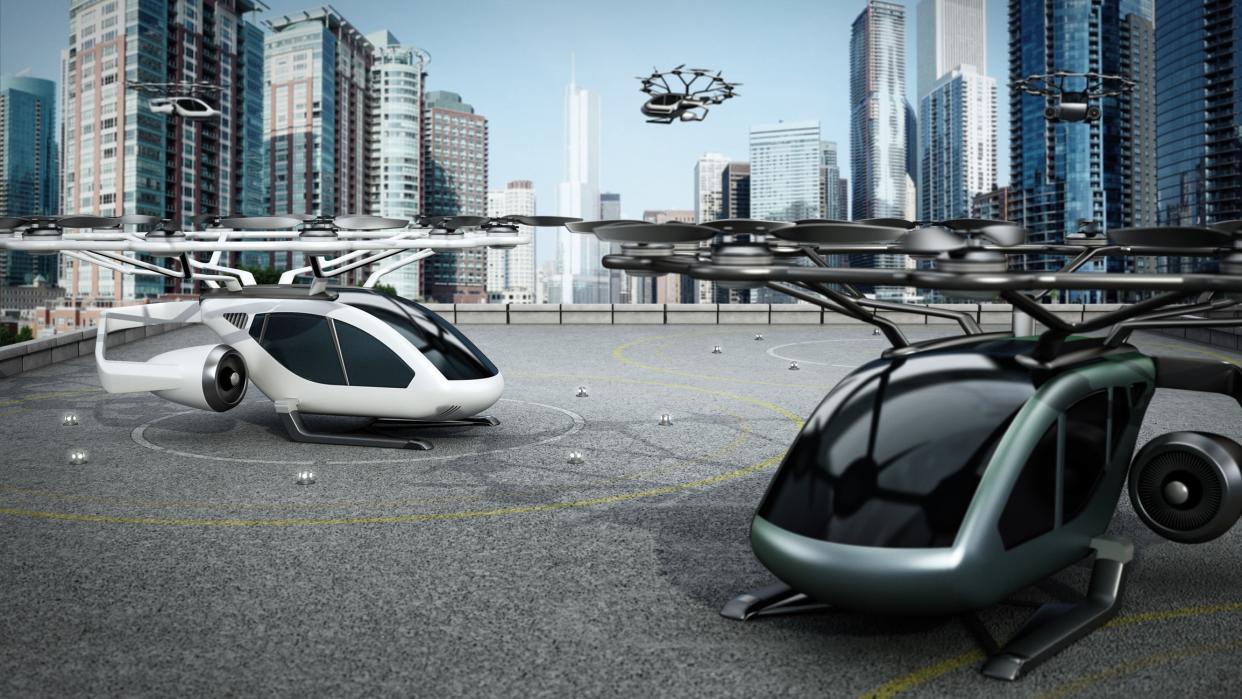
Science fiction, be it in the form of a book, movie, game or comic, is often a rich vein to tap for predictions of what technology could be on the horizon, or a sign as to where existing tech could go next. But you may be surprised to know that a good swath of what may seem like sci-fi actually exists in one form or another today.
Sure, we’ve yet to find ways to jump to hyperspace or have robots take care of our every whim, but there’s a lot of technology available right now that would have seemed like the fever dream of an impassioned fiction writer only a handful of years ago.
So here are 32 science fiction technologies that exist today — many of which you can try out for yourself.
3D printing
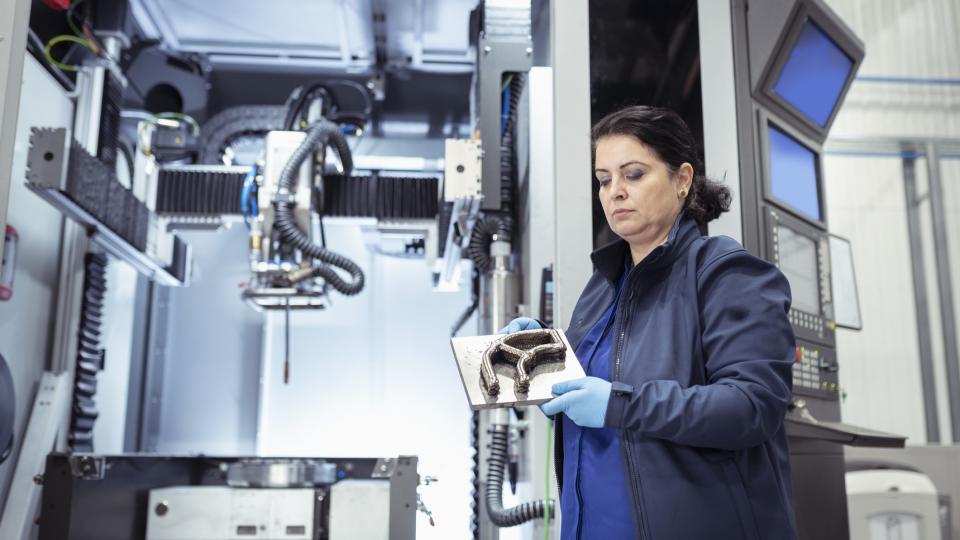
Star Trek’s replicator gave sci-fi fans the idea of creating things quickly out of some mystery energy/genetic material, with Captain Jean-Luc Picard barking "Tea, Earl Grey, hot."
Once total fantasy, 3D printers have made it possible to make a lot out of base polymers or even 3D print food. Modern 3D printers can create all manner of products out of polymers, metal and resin in a matter of hours, from car and vacuum cleaner components to toys, guns, models and more. And food can even be 3D printed by making use of paste-like foodstuffs such as gels and doughs.
Electric cars
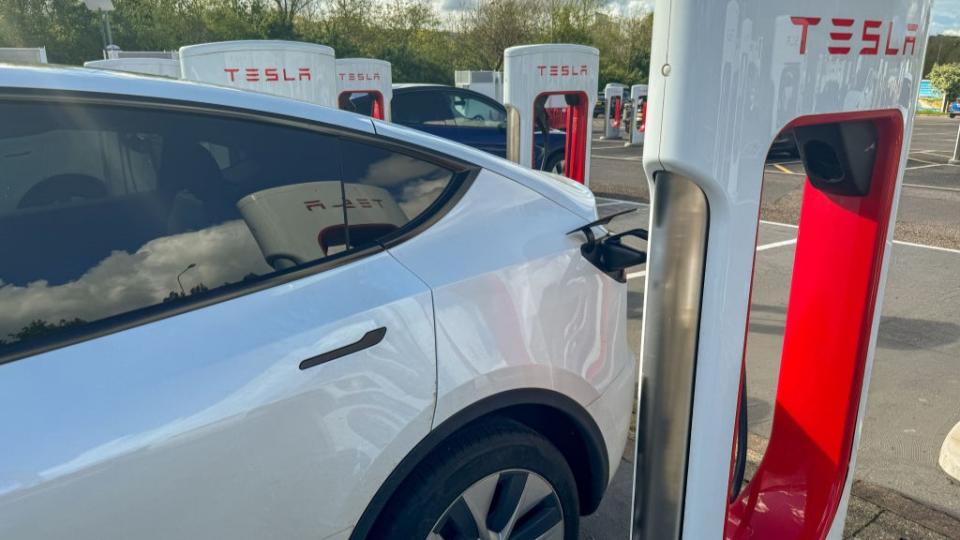
The idea of cars powered by anything other than gasoline — and steam in the late 19th century — used to feel like a fantasy, with 1910’s Tom Swift and His Electric Runabout; Or, The Speediest Car on the Road envisioning an electric car that could travel 300 to 400 miles (480 to 640 kilometers) on a single charge and hit speeds of 100 mph (160 km/h). But what was fantastical 100-plus years ago is now a stone-cold reality.
Driven forward by the likes of Tesla, modern electric cars can go hundreds of miles on a single charge and hit top speeds well in excess of 100 mph, with instant torque delivered via battery-powered motors offering huge acceleration. The only real limits to EVs are a still fledgling charging infrastructure and concerns over the lifespan of lithium-ion batteries.
Video calls and conferences

The idea of long-distance visual communications has been a staple in sci-fi for years, arguably iconified in Star Trek’s barking command of “on screen” resulting in a ship's forward window becoming a video feed of an often disgruntled alien. Fast forward a handful of decades and video calling has become commonplace in all manner of jobs where the need to be in an office or set location is no longer paramount.
The likes of Zoom, Google Meet and Microsoft Teams surged in popularity during the coronavirus pandemic of 2020, not only facilitating remote working amid lockdowns and stay-at-home directives, but also providing a social outlet for people isolated at home.
Of course, before that the rise of smartphones and Apple’s FaceTime had already made video calling seem only moderately novel, with rapid adoption by other phone brands and technology companies democratizing video communication and conferencing for pretty much anyone with an internet connection and even a basic smartphone.
Creative AI and virtual assistants

JARVIS in Marvel’s Iron Man and Samantha from Her cemented the idea of AI-powered virtual assistants that can aid their users in everyday life; be it creating a new element or simply being around to discuss one’s love life in natural, spoken language.
With ChatGPT, Claude 3, Google Gemini and other multimodal generative AI systems, we now have smart tools that can intelligently create things rather than simply seek out existing information. This can manifest itself in asking ChatGPT to come up with a haiku based on alliteration or create images of a dog on a moon, via simple commands spoken or written in natural language. Such AIs can still be a bit hit and miss, but they open a whole new avenue to creating content even if you don’t have the requisite art or Photoshop skills, or providing a virtual friend for times when one feels lonely.
4D movies

The creepily named “Feelies” of Aldous Huxley’s 1932 Brave New World conjured up the idea of movies that are not just seen and heard, but also felt and smelt via physical feedback through the arms of a seat and via a "Scent-Organ" producing smells relating to what’s on-screen.
Roll on 52 years and we got the first 4D movie with The Sensorium, which released scents into the theater and used bodysonic seats to provide some physical sensations. Such 4D movies and cinemas haven’t taken over from the more traditional 3D viewing experience, but improvements in sound, lighting and haptics have made them more convincing. And immersive cinema experiences from the likes of Secret Cinema can incorporate people into a movie setting in a blend of film and live action, adding an extra dimension again to the watching experience.
Driverless cars
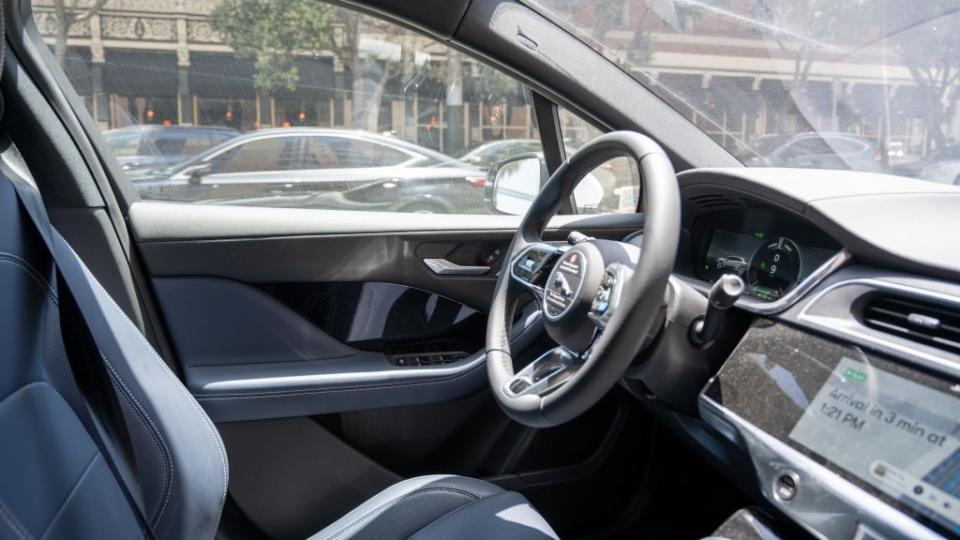
The original Total Recall featured a taxi driven autonomously by sporting a robotic driver. What seemed fanciful in the 1990s is now a reality. No, there aren’t robot taxi drivers, but there are driverless cars. Some of these are at the trial stage, in that they are used in restricted areas for full autonomous driving. Others offer autonomous driving so long as there’s a person behind the wheel to deal with the unexpected maneuvers of fallible humans.
Legalization and insurance hurdles are the main roadblock to a driverless car future. But with a lot of work being done in everything from autonomous driver aids to full driverless systems, the future of cars may kill the idea of an enthusiastic motorist.
Jetpacks
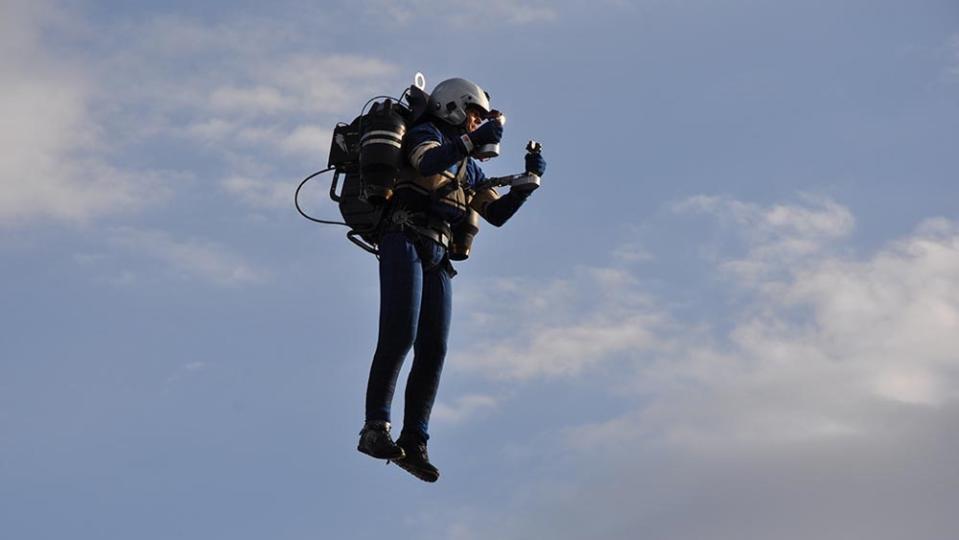
An iconic moment in the James Bond film Thunderball was when Sean Connery’s Bond uses the Bell Rocket Belt to escape a villain's chateau and get to his Aston Martin DB5. Such compact jetpacks are also a dime a dozen in all manner of far-future sci-fi, but while these have yet to be created, there are some real-world jetpacks that use clusters of small-scale turbo jet engines that can be vectored to provide some form of flight. Their major limitation is fuel consumption, with flight times limited to mere minutes.
For those with an affinity for the sea, there are jetpacks like the JetLev that use jets of high-pressure water sucked up from the sea to provide a form of flight. These aren't exactly the tools one would want at hand for escaping a building full of murderous mercenaries, but they show that jetpacks aren’t completely limited to sci-fi.
Cloning
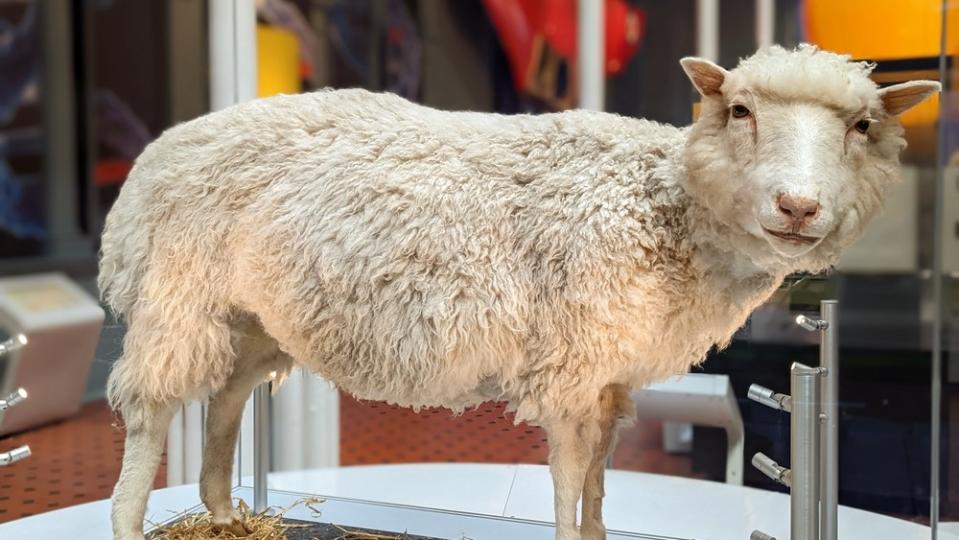
From A Brave New World to Blade Runner and beyond, clones or replicated humans are a regular fixture in science fiction. Human cloning has yet to happen, but cloning animals is very much a reality, first established with Dolly the sheep in 1996.
Technical obstacles — it took 270 trials to get Dolly — and ethical concerns mean directly cloning a human, called reproductive cloning, remains in the realms of fiction, and even researching techniques for doing so is illegal in many nations. However, therapeutic cloning, whereby stem cells with the same DNA as the donor are created to aid with regenerative medicine such as bone marrow transplants, is an active area of science and is being researched in nations like the U.K., Australia and China.
Humanoid robots
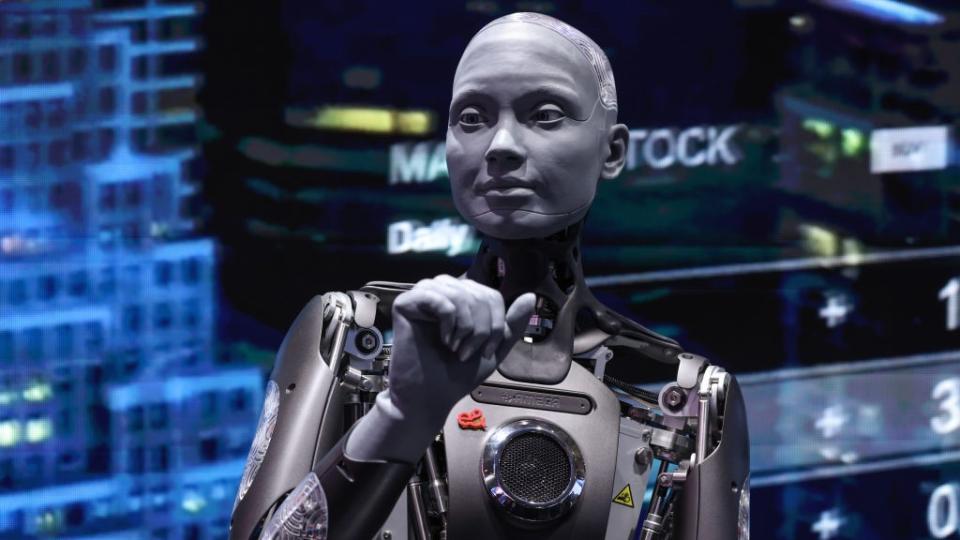
Robots have been around in manufacturing industries for decades, but humanoid robots that can provide a convincing human-like impression, such as those in 2004’s I, Robot, remained very much in the realms of sci-fi until recently,
Now with Engineering Arts’ Ameca, the so-called “world’s most advanced robot” powered by generative AI, there exists a humanoid robot that can interact with people in a — mostly — near-natural manner, and pull convincing facial expressions thanks to its intricately articulated joints and a flexible, skin-like coating on a robotic skeleton. Having seen Ameca in action, the robot’s ability to create human expressions is almost uncanny.
Robotic limbs
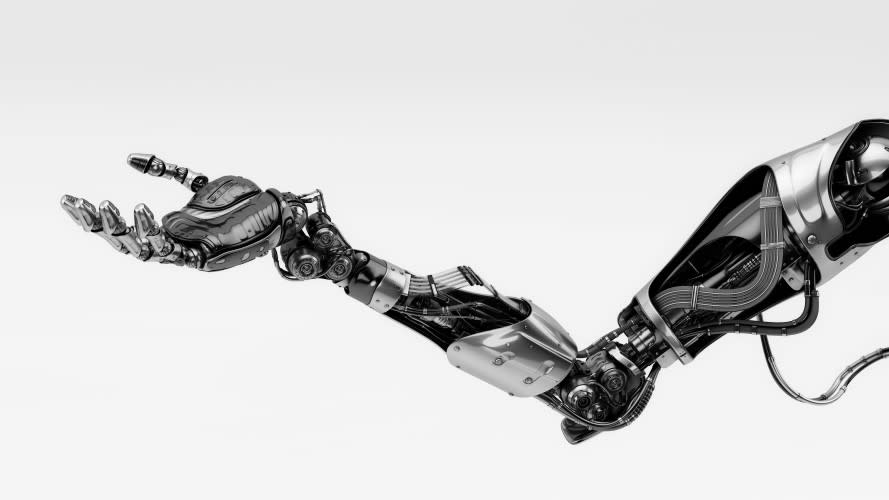
Many a cyberpunk novel, comic or game has explored the idea of robotic limbs as a form of human augmentation. The Deus Ex games stand out in particular, with robotic limbs being used for both curative surgery, as well as elective replacement of inferior flesh and bone body parts.
Human augmentation hasn’t reached cyberpunk levels yet, but there are now robotic arms and hands that can carry out far more dexterous movements than prosthetics of the previous few decades. As medical science and robotics advance, we’re likely to see robotic limbs become just as capable as their biological counterparts — maybe even more so.
Talking cars
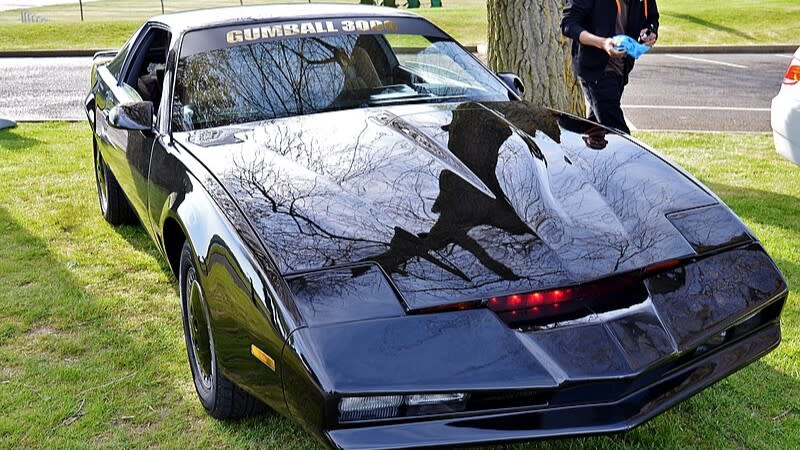
Think about talking cars and your mind’s eye will surely think of KITT from Knight Rider. But talking cars are a reality… sort of.
Thanks to the integration of Apple CarPlay and Android Auto into many modern cars, you can access virtual assistants like Siri and Google Assistant to respond to voice commands in natural language — modern car infotainment systems have some voice control but aren’t as sophisticated as the dedicated assistants in iPhones and Android phones. Meanwhile, chipmaker Qualcomm has its Snapdragon Digital Chassis platform, designed to bring generative AI into cars and let people have discussions with an AI about where to eat nearby and what problem a warning light on the dashboard is indicating.
Holodecks via virtual reality
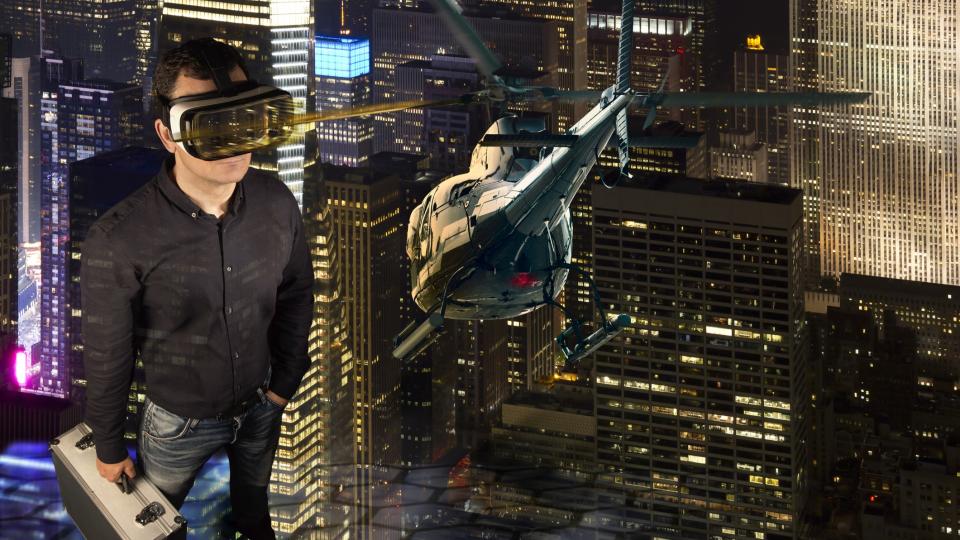
Star Trek: The Next Generation conjured up the idea of a Holodeck where the crew of the USS Enterprise could go into an expansive room that would realistically replicate all manner of settings, though commonly the crew would go back into 20th century settings or earlier. While true Holodecks have yet to arrive, University College London has the Immersive VR Lab, which lets people explore a virtual setting without the need to wear a virtual reality headset.
But that’s more for experimental purposes. In the consumer world, a form of Holodeck exists via virtual reality headsets, ranging from simple ones that use mobile-grade chipsets to provide virtual experiences and games, such as the Meta Quest 3, to advanced headsets like the Valve Index and PlayStation VR 2 that can deliver high-fidelity virtual reality games, complete with room-scale VR, eye-tracking and advanced haptic feedback to simulate things like climbing a mountain or the tension of a taut bowstring. Such headsets can effectively turn a room into a form of Holodeck, albeit with a few limitations such as cables.
Virtual worlds

Building upon the concept of Holodecks is the idea of virtual worlds — think the simulated Earth in The Matrix. Thankfully we’ve yet to build AIs that enslave humanity as biological batteries and control them in a virtual take on the late 20th century, but we do have some fairly advanced virtual simulations.
Games like Second Life provide virtual communities, with people exploring them via avatars and interacting with real humans. Second Like has grown to support some one million players at its peak and has seen people foster real friendships and even relationships that have resulted in real-world marriages.
Elsewhere, sci-fi space massively multiplayer games like Eve: Online have bloomed into virtual economies with a real-life monetary value — this has seen virtual corporate wars, conspiracies and theft at a massive scale, resulting in the loss of thousands of dollars of virtual assets. And the now venerable World of Warcraft gives people a vast and evolving fantasy world to explore with interwoven quests and storylines.
Food in pills

Food in pill form is a classic staple of space-based sci-fi, but even Roald Dahl's Charlie and the Chocolate Factory featured a gum that could impart the flavors and feeling of a roast dinner.
That level of tech remains the stuff of fiction, but food supplements and the ability to create meals by simply adding hot water to a dried food mix are the real-world parallels. And appetite suppression pills are arguably one way to help people feel full without ever taking a bite out of anything solid.
Rebreathers
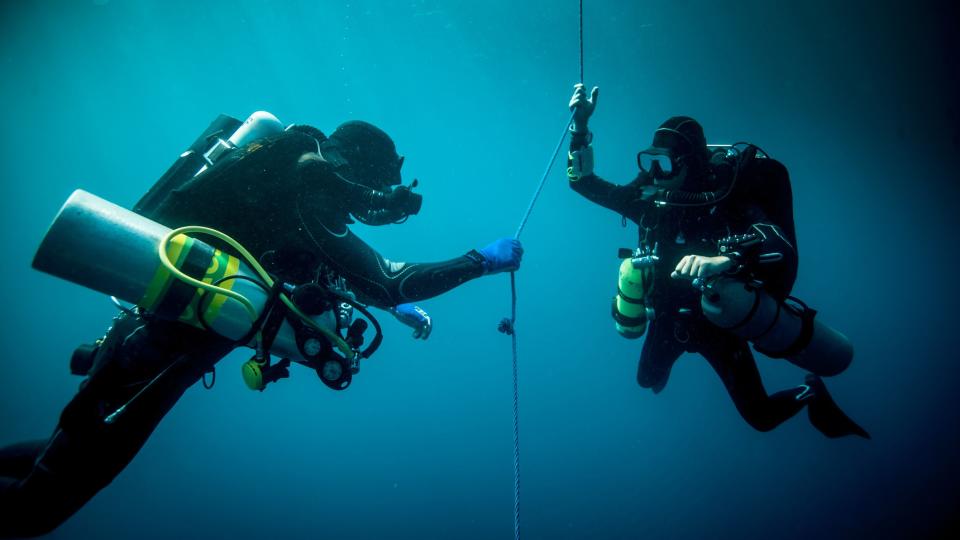
Another iconic moment in Thunderball was when Bond was thrown into a shark tank and managed to escape with the assistance of a pair of tiny oxygen tanks connected to a mouthpiece. And in the maligned Star Wars: The Phantom Menace, Jedis Qui-Gon Jinn and Obi-Wan Kenobi use similar devices to dive down into the underwater cities of the Gungan.
Such tiny tanks and rebreathers are still fiction, with their size unlikely to provide much more than a few breaths in a real-world application. However, compact oxygen tanks with a mounted mouthpiece are used as emergency backups when a SCUBA aqualung runs out of air or malfunctions. Furthermore, air scrubbing and recycling can act as a form of rebreather on the International Space Station, and in the Extravehicular Mobility Units (spacesuits) used by Space Shuttle astronauts when spacewalking.
Exo-skeletons
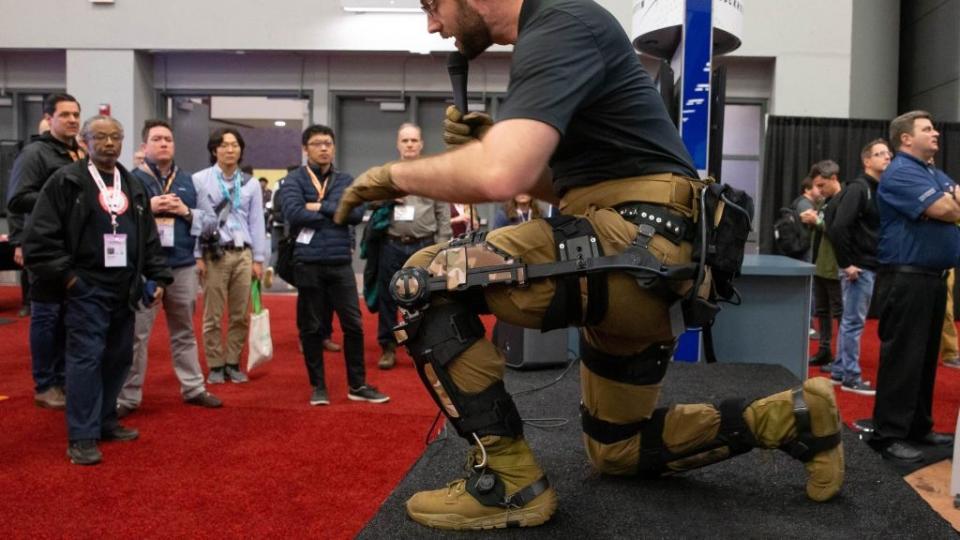
Powered exo-skeletons have featured in sci-fi for years, with some popular examples being the P-5000 Powered Work Loader in Alien, which Ellen Ripley uses to battle a Xenomorph queen, and more recently the exo-skeleton battle suits in Edge of Tomorrow and Elysium.
But they exist in the real world too. Notably, the U.S. Defense Advanced Research Projects Agency’s Warrior Web program developed prototype exo-skeletons to enable soldiers to carry heavy loads. And Lockheed Martin’s Human Universal Load Carrier allows soldiers to carry loads of up to 200 pounds (91 kilograms) thanks to the use of titanium legs and onboard computers to mimic human movements.
Nuclear-powered vehicles

In 1914, H.G. Wells’ The World Set Free envisioned vehicles running on atomic power, and more recently the Fallout game and TV series ran with his idea, with an alternative history that saw the Atomic V-8 car powered by a nuclear fusion engine.
Now, while nuclear fusion-powered cars are theoretically possible, safely shrinking a reactor to car engine size is a technical challenge that humans have yet to overcome. However, we do have nuclear-powered vehicles in the form of nuclear submarines and ships. For example, the USS Enterprise aircraft carrier that operated up until 2012 was powered by an unprecedented eight nuclear reactors. And the U.K.’s Royal Navy's Vanguard Class submarines make use of a Rolls-Royce PWR 2 reactor. Unlike their land-based equivalents, these marine reactors use a metal-zirconium alloy rather than ceramic uranium dioxide as fuel, with the goal of having a long core life, so that refueling is only needed after 10 years or more.
Living in space
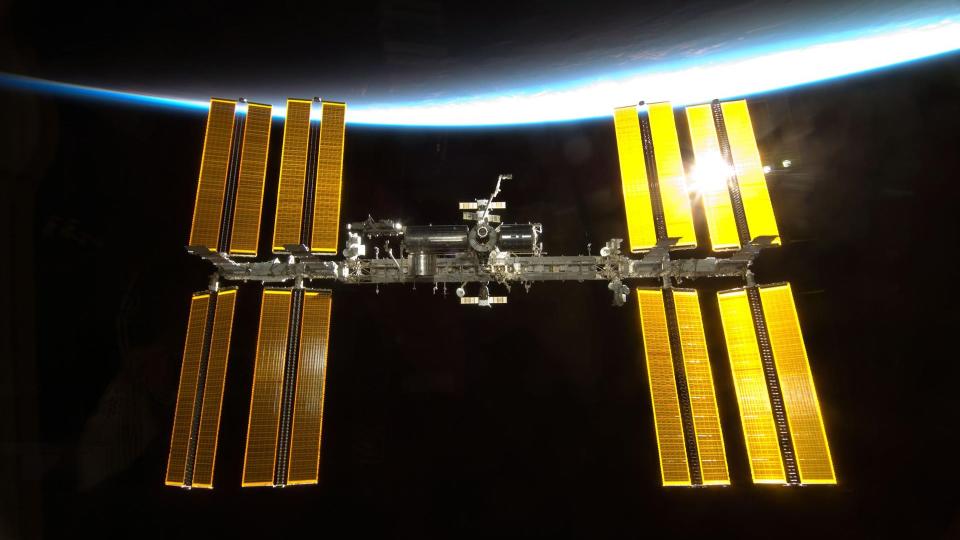
OK, so the ideal of living in space under giant domes or in vast space stations such as Star Trek’s Deep Space Nine are far from reality. But humans have been living in space for decades, notably with the International Space Station.
A joint effort between the space agencies of the U.S., Russia, Japan, Europe and Canada, the ISS can support astronauts and scientists living in the zero gravity of space while orbiting Earth. Solar panels harvest energy, while supply runs via space shuttles and unmanned rockets keep people in the ISS alive. Resistance training is needed to keep muscles from atrophying in zero-g and the space station is far from self-sufficient, but the ISS does provide a gateway to living in space.
Railguns
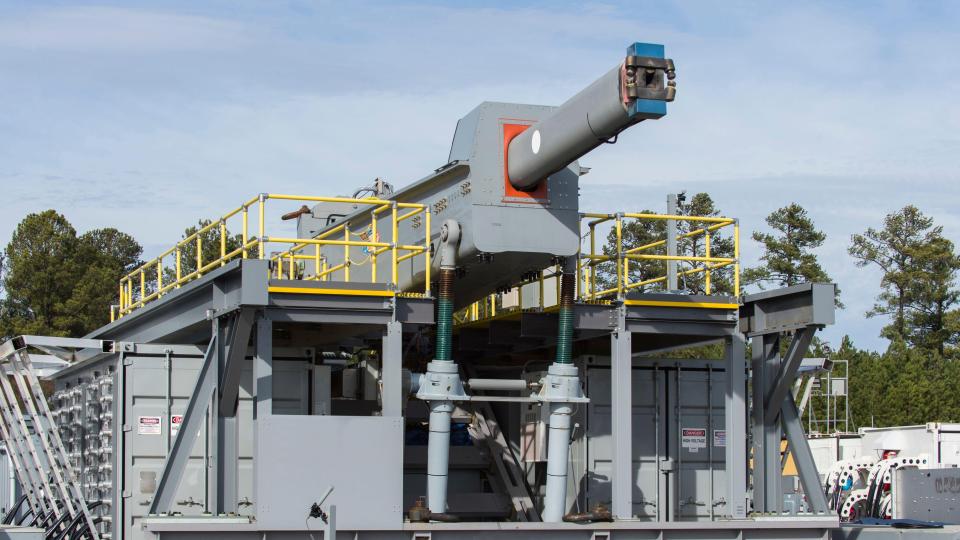
Featured a lot in so-called hard sci-fi, railguns can be found mounted on spaceships like The Expanse’s Rocinante, the Daedalus in Stargate, and a lot more. Also known as gauss guns or mass drivers — such as the mass accelerator guns in BioWare’s space opera games Mass Effect — railguns work around the idea of using electromagnetism to accelerate a slug along twin rails, bypassing the need for a combustible accelerant like gunpowder. In fiction, these weapons are generally line-of-sight, firing unguided tungsten rounds at targets within a range where the shot can’t be easily dodged.
Actually first conceived in 1879 as an electric cannon, functional railguns didn't become a reality until 2010, when BAE Systems developed one capable of firing a 7 lb (3.2 kg) projectile at 3,390 m/s. This used the same concept as the sci-fi equivalents, and saw the U.S. Navy flirt with railgun development until 2021, when it shelved the project.
Other nations like Japan are also looking into developing rainguns. However, the biggest drawback is the huge energy needed to accelerate a slug. As such, gunpowder-based shells with large caliber guns are still used for close-quarters ship combat. Equally, there are consumer railguns that use electromagnets to accelerate small metal discs. Again, the charge they deliver doesn’t make them effective combat weapons; instead they are more niche guns for casual target practice.
Space tourism
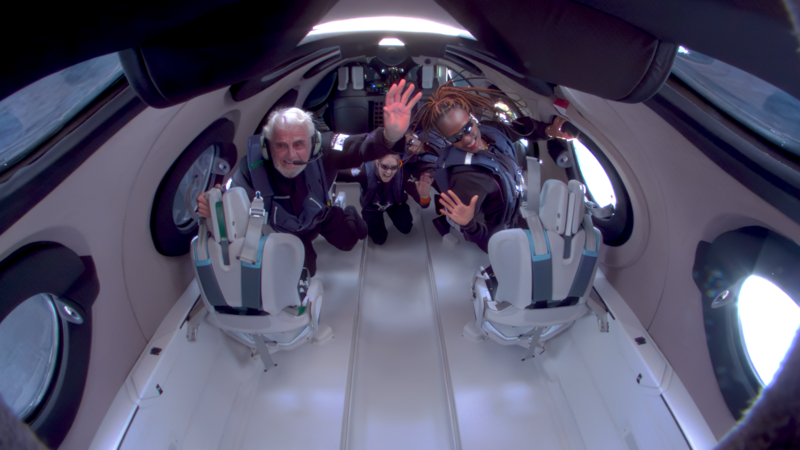
Exploring the stars is likely the fantasy of many people who’ve looked up at a star-studded sky on a clear night. But with a lack of an efficient fusion engine or faster than light travel, the sci-fi idea of space tourism — adventures to spa facilities on Titan or the joys of Starfield’s Neon city — are still stuck in fiction.
But a form of space tourism does exist, in the guise of Virgin Galactic, whereby a specially-designed ship can take a handful of people to the sub-orbit of Earth — near enough space with low gravity and all. Just be aware you need a spare $450,000 and likely a direct line to Sir Richard Branson.
Stealth tech

Star Trek’s Klingons and their Bird of Prey ships are iconic for their ability to cloak and avoid detection by the likes of the USS Enterprise. The idea here is that the ship can bend light around it to become invisible. In more realistic sci-fi, stealth is less about being invisible than about hiding a ship’s heat signature and radar profile, as seen in Mass Effect’s Normandy stealth frigate and the angular Anubis class stealth frigates in The Expanse.
Currently, humanity has no spacefaring stealth ship, but stealth ships and craft are very much real. The U.S. navy’s experimental Sea Shadow (IX-529) used an angular design to give it a low-radar profile in order to avoid detection, while the French frigate Forbin has a faceted appearance to reduce its radar cross-section.
Stealth aircraft work in a similar way, with passive low observable features to minimize their radar profile, while they also use surfaces that can absorb radar energy, preventing it from being bounced back to a receiver.
Smartwatches
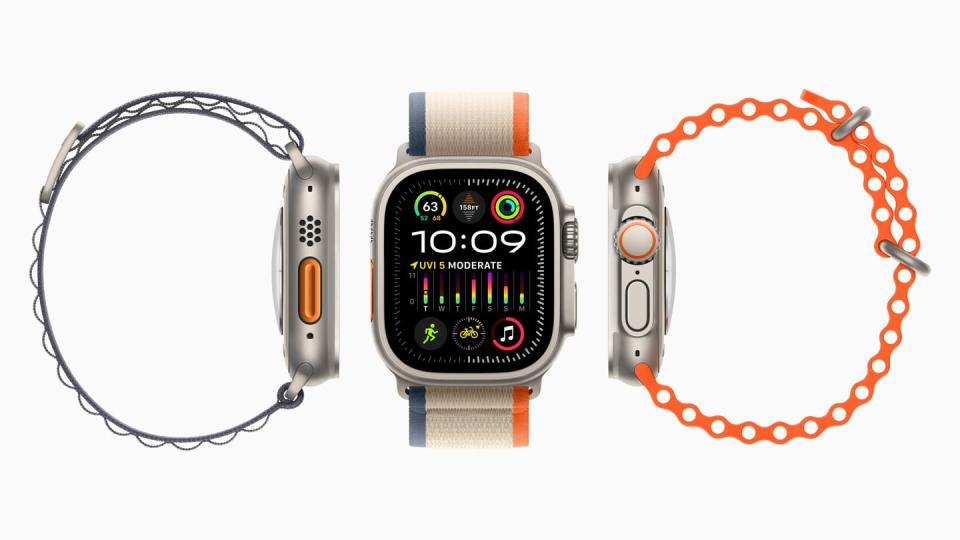
Dick Tracey and the likes of Thunderbirds introduced the idea of being able to speak into a watch, even one with video displayed, while the Seiko G757 Sports 100 watch in James Bond film Octopussy, could display messages from MI6 on a small digital display.
These days this all seems very basic, thanks to smartwatches, led by the Apple Watch. Not only can calls be handed via these watches, the latest smartwatches can track your health metrics, intelligently assess your physical performance, act as an organizer of daily life, control smart home gadgets and more. In the nine years since the original Apple Watch was launched, smartwatches have evolved from phone accessories into wearable computers that arguably eclipse even much of what sci-fi envisioned.
Smartphones

The idea of handheld, do-everything computing devices is a staple in sci-fi, with the likes of Star Trek’s Tricorders purportedly being the inspiration for flip phones. But the hand terminals of The Expanse series are smartphones that have the ability to spool through cross-solar system news feeds and alert people to take specific medication.
Modern smartphones are arguably rather sci-fi devices in themselves, as they’re basically computers in slim, pocketable, rectangular form. Even budget phones are now capable of putting nearly any information you can imagine at your fingertips, as well as being a portable camera, video editing suite, games console, streaming device, media player, smart tech controller, productivity tool, home for an AI and a lot more. And now some of them fold.
Real-time translation

Universal translators, up to and including the Babel Fish in Douglas Adams’ Hitchhiker’s Guide to the Galaxy, have long been a way for sci-fi to handwave away the problems of communication between “advanced” extraterrestrial lifeforms. However, thanks to Google Translate and now AI-powered translation apps and tools, we are approaching a reality where universal real-time translation is a district possibility.
Right now, translation tools in phones like the Samsung Galaxy S24 can provide two-way audio translation of speech in select languages. We still need to discover extraterrestrial life before we can have the universal translators of sci-fi, but we have the rudiments of the technology.
Targeted advertising

Minority Report envisioned targeted advertising dynamically adjusting ads to suit your interests back in 2002. Around a decade later, it became a reality. As you read this very article you’ll have likely encountered so-called cookies that can scrape what you’ve searched for on your computer or phone’s browser and serve up adverts that are (or should be) relevant to your browsing.
This has evolved with apps like Google Maps serving up places you might be interested in visiting based on your trips and wandering, while algorithms in streaming services like Netflix and Spotify work to flag content they think is relevant to your tastes.
Sometimes today’s targeted advertising can be uncanny, with the feeling that a conversation you’ve had with friends about a holiday suddenly results in adverts about vacation services popping up on Instagram. However, there's no evidence of such apps being quite that advanced — and users can, thankfully, opt out of targeted advertising.
Drones
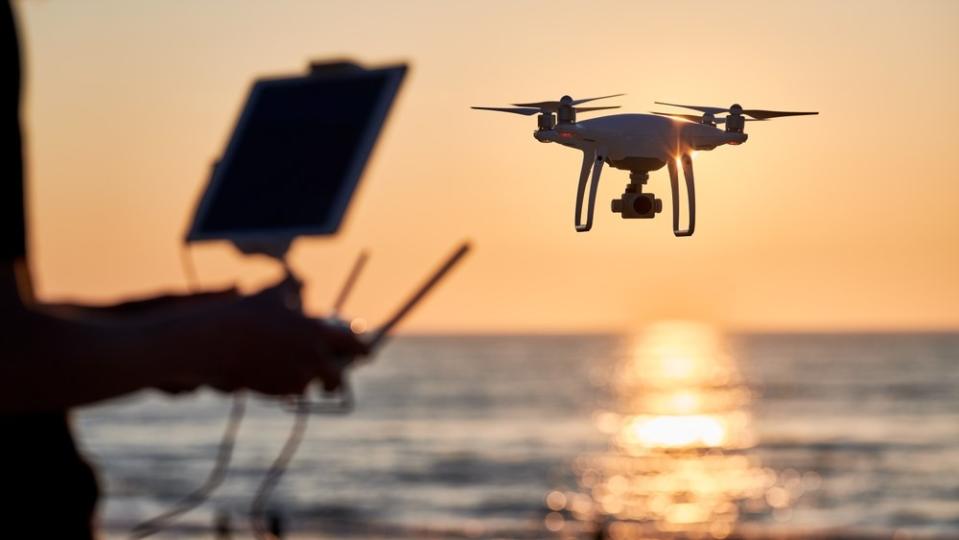
1974’s Danny Dunn, Invisible Boy featured what was basically a drone, in the form of a tiny flying device packed with sensors that could be flown remotely. Now, some 40 years later, consumer drones are very popular, used to take photos and videos that would have previously needed a helicopter, or simply piloted around for fun. Furthermore, drone racing is a legitimate sport and drones can be had in all sizes.
On the more sinister side, drones are used for military purposes, not only to deliver explosive payloads in a form of a bootstrapped pilotable bomb, but also as dedicated unmanned aerial vehicles armed with cutting-edge guns and missiles that well-equipped militaries can send into a battle zone without the need to risk manned aircraft. With drones being considered for delivery of goods and not just offensive payloads, expect drone use only to expand as this decade marches forward.
Mass surveillance
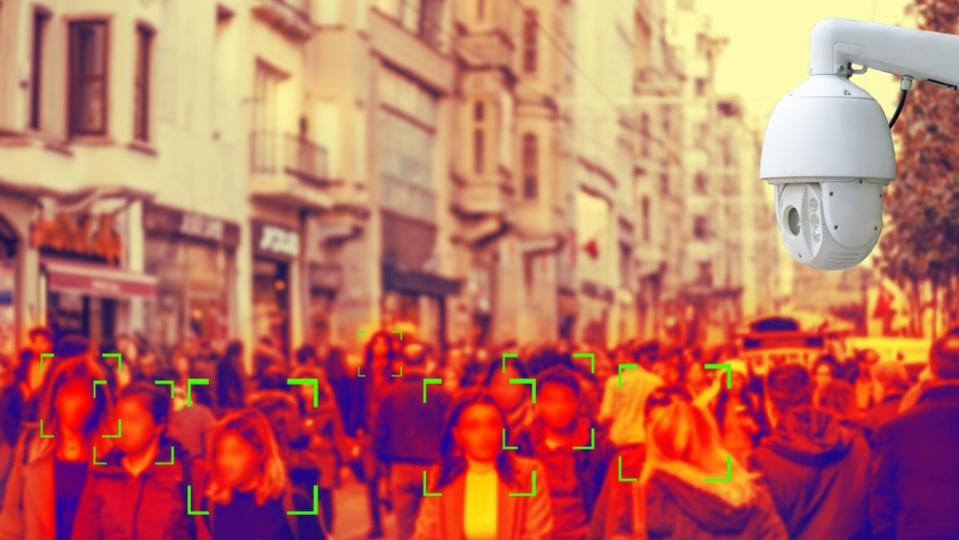
George Orwell’s 1984 envisioned a dystopian world where people could be watched by the governing powers in their own homes. While this has yet to happen in daily life, U.K. TV show Big Brother borrows from Orwell’s overseeing antagonist and puts willing contestants into a house where they are isolated from the outside world and are constantly monitored by the all-seeing-eye “Big Brother,” who also directs them to do various, often humiliating tasks.
This is entertainment, but mass surveillance also happens in a very real way in daily life. We now live in cities with interconnected surveillance cameras feeding into hub systems. Currently used predominantly as a crime prevention and law enforcement tool, as well as a way to monitor footfall, this level of surveillance can easily track suspicious people from street to street, acting as an eye-in-the-sky guide for police and security. Beijing and London are two of the most-surveilled cities in the world, with the latter having some 67 CCTV cameras per 1,000 people.
Flying cars
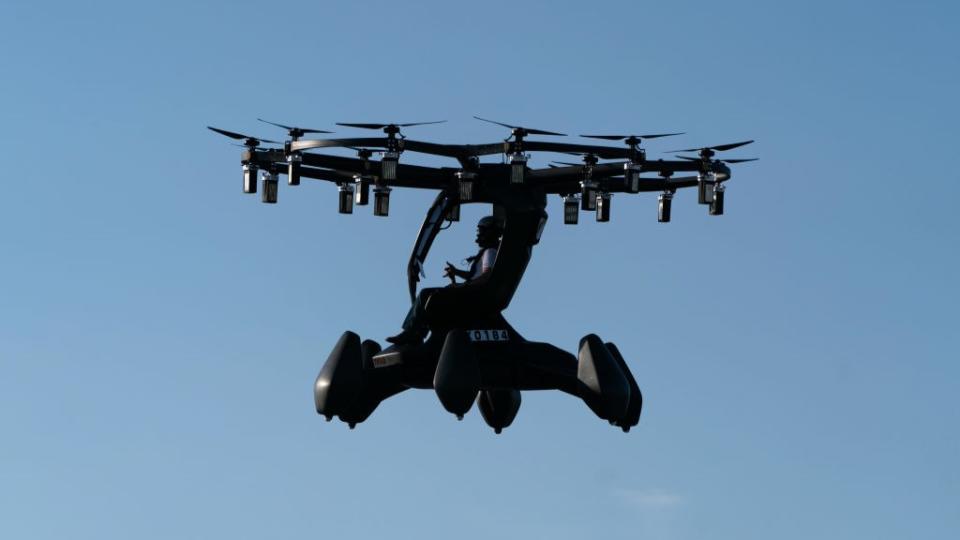
The Jetsons seeded the idea that flying cars are the future, but while electrification of power trains was explored in the past few decades, the idea of flying cars had seemed pie-in-the-sky.
Yet in recent years more concepts for short-range, electric vertical takeoff and landing (VTOL) taxis and cars have popped up, with many looking set to become a reality this decade. We currently have the technology for somewhat efficient flying cars, but safety, legal and insurance hurdles currently stand in the way, though nations like the U.S. and China are working on establishing guidelines for safe, legal flying cars in the next decade.
Wireless earbuds and communication

From Star Trek’s ComBadge to James Bond gadgets, the idea of wireless communication via a form of wearable device, mostly earbuds, permeates a lot of sci-fi. But the advent of Apple’s AirPods wireless earbuds galvanized not only cable-free audio but also wireless, hands-free communication.
The latest iterations of wireless earbuds and headphones contain all manner of smart technology, from active noise cancellation to touch-sensitive controls and movement detection. And now we have bone conduction audio that allows one to receive audio via devices like smart glasses without the need for in- or over-ear headphones.
World Wide Web

While the concept of the internet existed before William Gibson’s 1984 Neuromancer, the novel is credited with popularizing the term “cyberspace” and envisioned a global network of connected computers transferring information in a graphical interface. If this sounds familiar it’s because that’s the premise of the World Wide Web we have today, though back in the 80s when personal computers were a novel idea, the concept of such linked technology and information highways was science fiction.
That really started to change in the 1990s, when the Web opened to the public. It has since blossomed to become the place where one can access pretty much the sum total of human knowledge, masses of entertainment, content both pure and sordid, and a whole lot more. Tim Berners-Lee’s invention may have seemed like sci-fi but has changed the way information is consumed, and economies and even societies are influenced at an unprecedented scale and pace; often for the better, but at times for ill.
Synthetic and plant-based meat

Both Bethesda’s Starfield space-exploration epic and the hard sci-fi of James S.A. Corey’s The Expanse series feature synthetic meat, with the idea being that getting fresh, real beef or pork out in deep space would be a logistical nightmare.
But the idea of using either cultured meat proteins or alternative proteins to replicate meat is very much a reality today. Impossible Foods made waves in recent years by creating a beef burger out of soy protein that mimics the look, feel and flavor of real beef, with many people swearing they can’t tell the difference.
And vegan food company Beyond Meat makes readily available, plant-based products that aim to replicate the flavor of their real meat counterparts, though discerning palates can still taste the difference between the real and fake.
While we may hit a limit to how closely vegan foods can replicate real meat, lab-grown meat is being explored as an alternative to the traditional rearing and slaughtering of animals. This process grows meat from real animal cells, thus producing real meat — just without killing a pig or cow. Companies like Eat Just already sell cultured meat, but the problem is producing it at scale at an affordable price; expect things to develop over the next decade.
Household robots
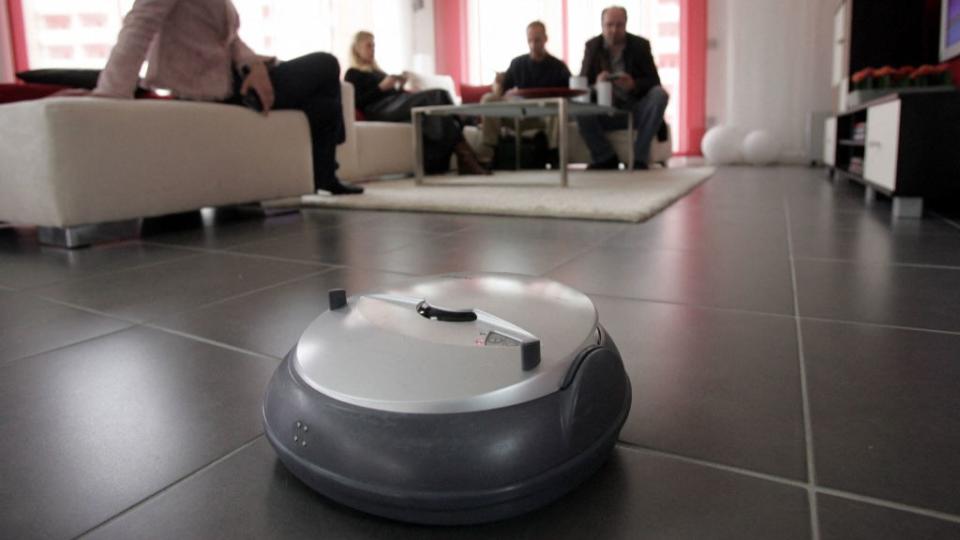
Robot butlers and house-based bots are a staple of science fiction; a recent example being the Codsworth robot in the Fallout TV show and games. While we’ve yet to get humanoid robots to serve us martinis at leisure, many of us do have robots in our homes right now.
Mostly, these come in the form of robot vacuum cleaners and grass mowers, many of which have advanced tracking and automation regimes so that you can simply leave them to their tasks. But there are also robot pets, most notably Sony’s AIBO robot dog, which can respond to voice commands and sense when it’s being petted. And Amazon’s Astro aims to be an automated home monitoring robot, complete with Alexa built-in to respond to natural language commands.

